This is a salt marsh habitat restoration project in south San Francisco Bay in the town of Newark just across the Dunbarton Bridge from Palo Alto. Salt marshes are very productive habitats from an ecological perspective. Most of California's salt marshes have been destroyed. In south San Francisco Bay, many salt marshes were converted to salt ponds to produce commercial-grade salt from the evaporation of salty Bay water. Though man-made, salt ponds attract and sustain their own wildlife ecologies. Learning how to balance the interests of both salt pond and salt marsh ecologies is an ongoing focus of restoration ecology.
I'd never been here before. I thought it would be interesting to see a salt marsh on my own before I go with the class.
The Bay marshes are on the other side of this hill. I see they've also done a lot of native plant restoration.
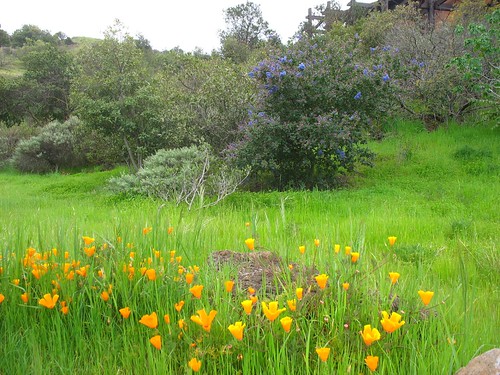
Flowers of Arbutus menziesii (Ericaceae)
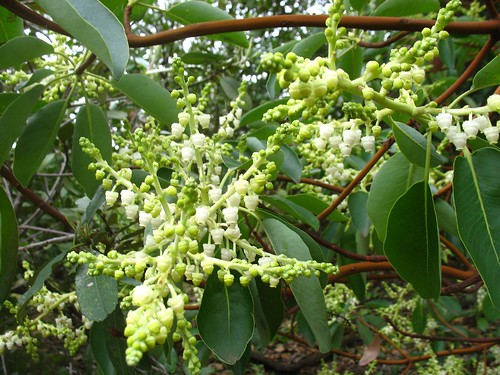
Salvia spathacea and Ceanothus...'Julia Phelps'?

The Ceanothus buds go from plummy purple to rosy pink before the flowers open.

Salvia mellifera, right?
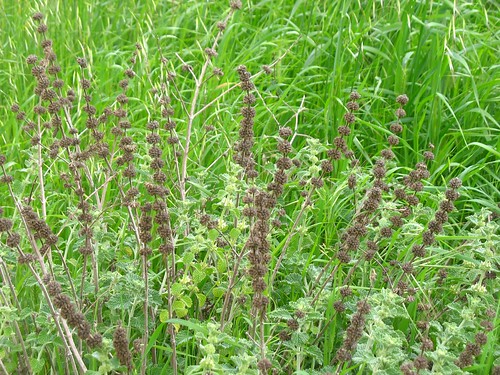
The salt ponds and marshes on the other side of the hill. That's a former hunting cabin, rather restored I think.
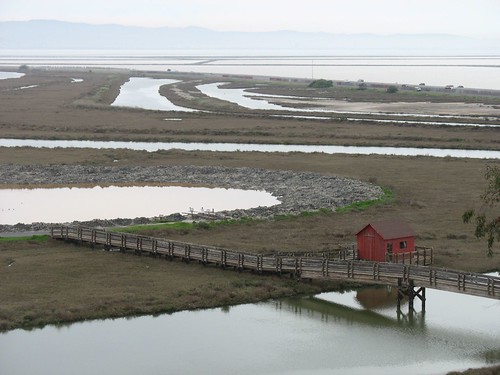
Clear biotic zonation where the pickleweed meets the dry upland.
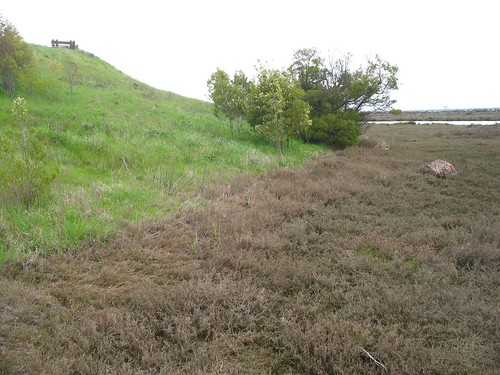
Pickleweed (Salicornia sp., Chenopodiaceae). Chenopods have none of the symbioitic relationships with mycorrhizzal fungi that help other plants survive in adverse
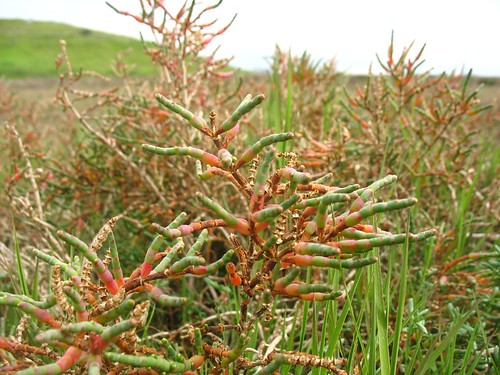
Pickleweed migrates salt from roots to shoots and compartmentalizes the salt in extremity plant part. Then the plant scissions the salty extremity and lets it fall off.
Some bird sightings:
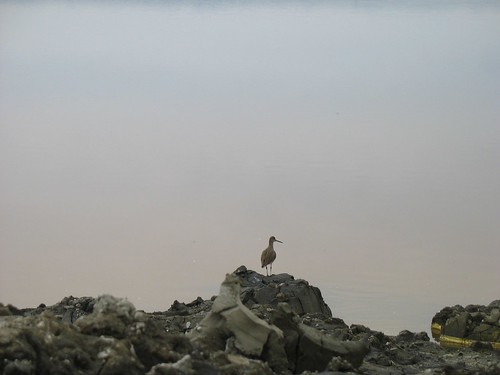
I think this is a dowitcher, possibly a winter?

The black-necked stilt, Himantopus mexicanus.

The Peterson Guide says, "A large, extremely thin wader; black above, white below. Note the grotesquely long red legs and needle-like bill. In flight, the black unpatterned wings contrast strikingly with the white tail, wing, and underparts.
Voice: A sharp yipping: kyip kyip kyip.
Well, I didn't hear any of that. But he took off and his legs were very long.
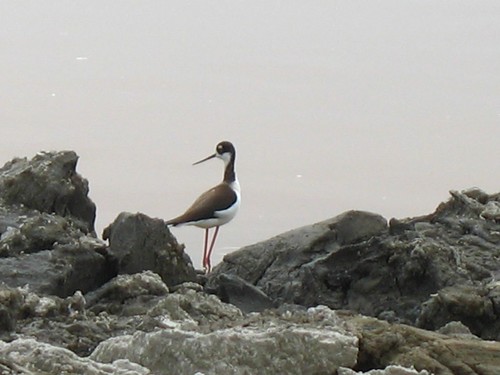
And then this dude jogged past me with his long, stilt-like legs. You can't make it up, folks.
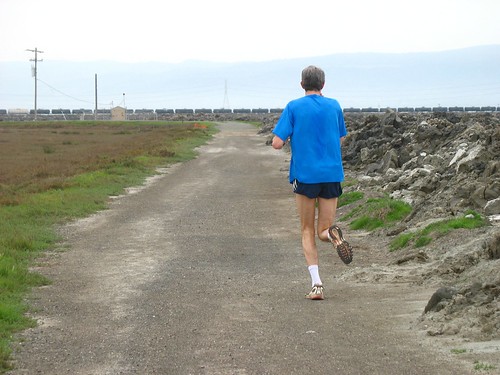
I think the technical name for this one is "little brown bird".
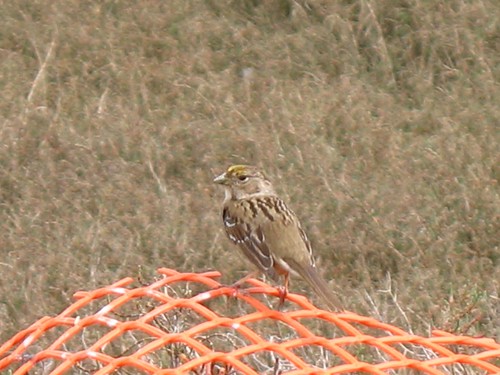
Mallards, Anas platyrhynchos.
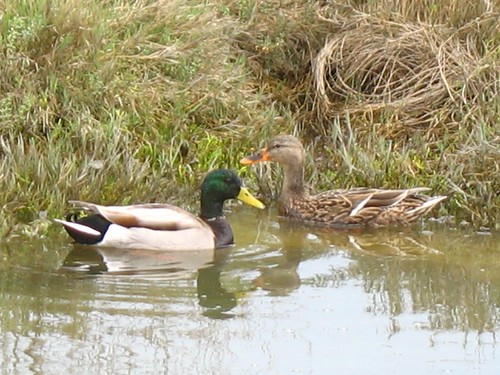
The silty clay dredged up to shore the levees was interesting in its own way too.
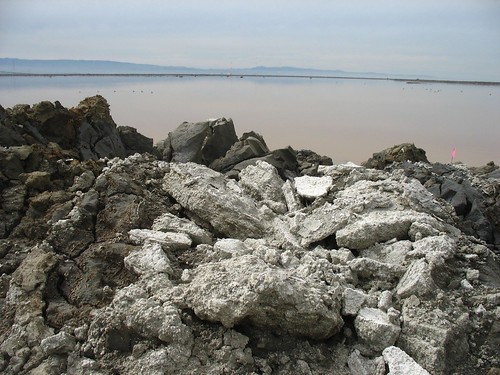
Lots of embedded oyster shells.
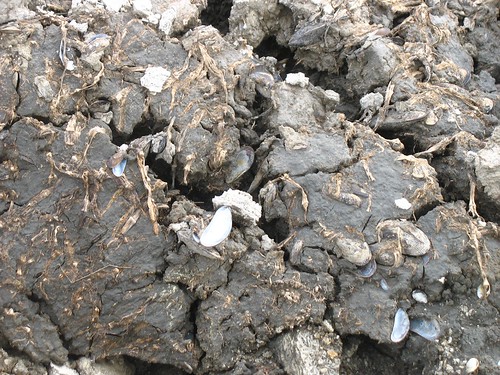


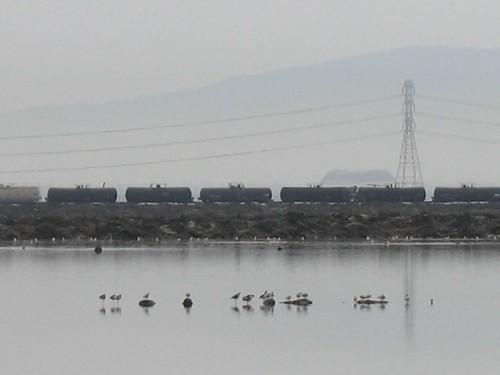
These might be identified in the plant key handout for the reserve. I'll look them up later.
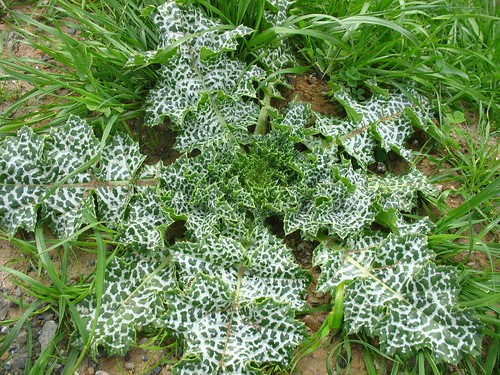
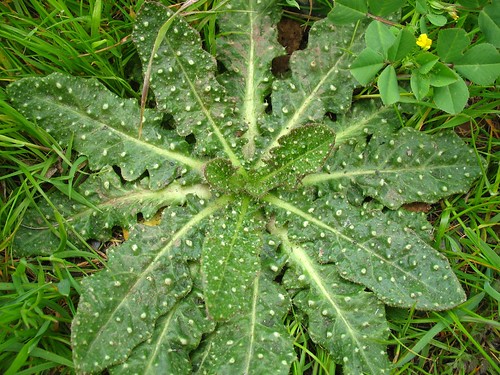

Lots of Chlorogalum.
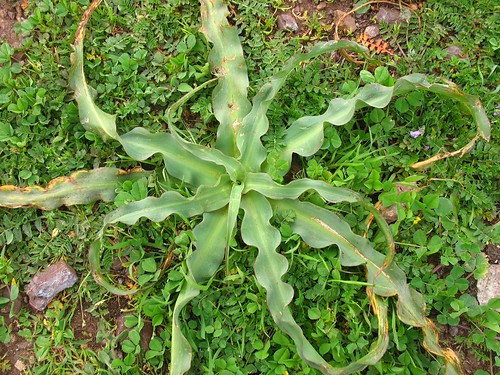
I've never seen it so profuse in a disturbed space like this.
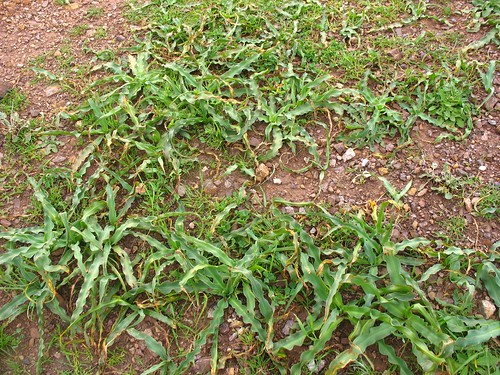
This little lupine is starving for something. Maybe water?
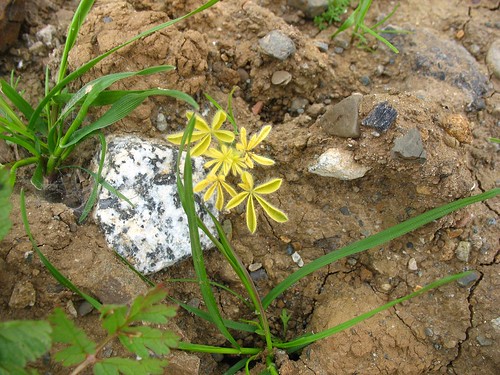
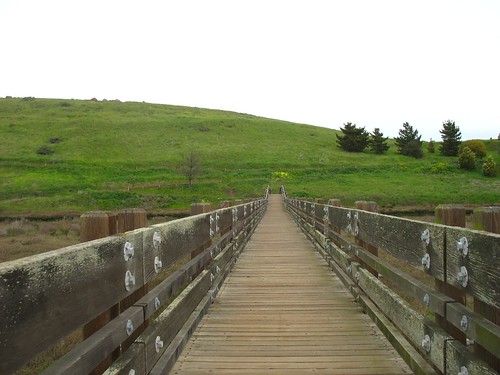
Lots of small den-like structures in the marsh.
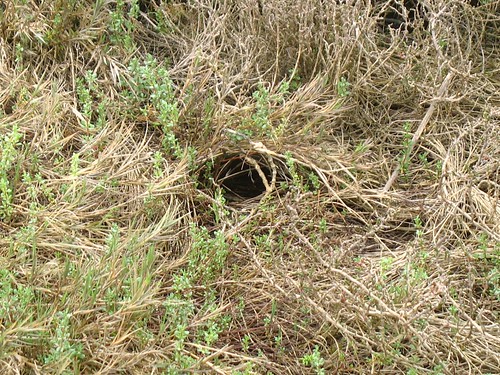
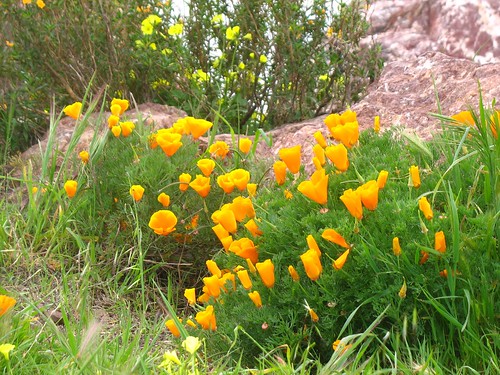
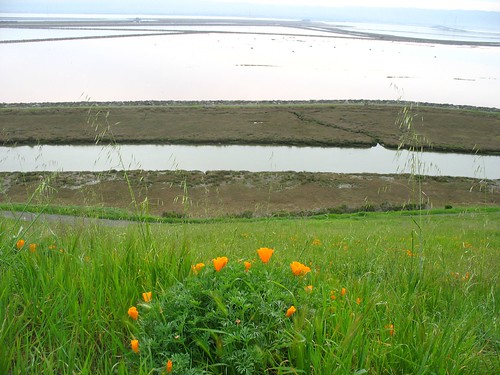
Time to go.
Introduction and TOC.

10 comments:
Very cool. It makes me happy to think they are being restored. We are trying to do the same with grasslands here.
Alright, it's SO not native here, but I can't help but want to plant California poppies this year. That's a luscious color there.
(Btw, I have those Little Brown Birds all over my backyard, too!)
The first thistle is non-native, milk thistle. Native to the meditteranean.
Hmm. I don't remember my Julia Phelps buds looking quite that light a pink when they were about to burst. And I think the blossoms might be a bit darker blue.
Here's a photo of one of my Julia Phelps plants at about that same stage (which doesn't happen until early/mid April in Seattle):
http://www.flickr.com/photos/midbeaconhill/457338426/sizes/l/
But maybe the plants look different in different regions, or at different states of maturity. And maybe I don't know what I'm talking about.
I can't wait for them to go off again this year. They're going to be so much bigger and bluer than last year! They're really thriving in our backyard, hurray!
Yeah, I think you're right. Julia Phelps gets confused with Dark Star. Cultivars should look the same where ever they grow. I think the leaves on these are too big to be J. Phelps.
I need to read that Ceanothus book.
Milk thistle is the variegated dandelionish plant? It could work for alien vegetation in a star trek movie.
Nothing familiar but much that is interesting! Thanks, Chuck.
Annie at the Transplantable Rose
Like Annie, most are so foreign but all are lovely. I want to know what are they hunting in a cabin so out in the open? Or were?
Frances at Faire Garden
Very interesting! I say the mystery plants are "mottle thistle" and "wart thistle"...but the real names will be much more scientific.
Thanks for the lovely scenic nature tour and botany lesson. The only species I recognized for sure was the brown bird - yep, I'd know him anywhere. Oh, and the jogger.
The purple flower looks like the non-native wild radish, Raphanis sp. It's a common plant around our marshes too.
Post a Comment